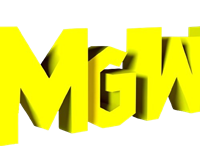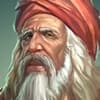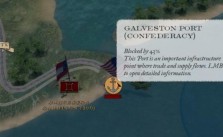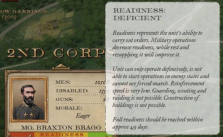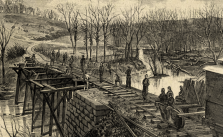Grand Tactician: The Civil War (1861-1865) – Fog of War & Intelligence Gathering
Fog of War & Intelligence Gathering
When Fog of War is enabled in the Game Options, information about the enemy is imperfect. Depending on the intelligence-gathering value of your units, the enemy units are shown on the campaign map. The larger the enemy unit, the further away intelligence about its actions can be received. Smaller .armies, especially with cunning commanders, are more challenging to detect.
When an army is detected but sufficient intelligence is lacking, its location and composition are estimated. These estimates are shown on the map as NATO symbols or the paper map as flags. These are placed in the approximate location the intelligence indicates, but this information could be erroneous. The NATO symbol will display “?” if the unit’s composition is not yet determined. Below the NATO symbol is text providing you with the date of the most recent information about the enemy unit.
If the enemy armies move, information about their movement, including their estimated route of march, is shown on the map in the form of a line of arrows pointing in the direction of that movement. Once the enemy unit is spotted by your scouts and can be kept under constant surveillance, it will be shown on the map in the same manner as your units, displaying the soldiers or camps in the terrain.
Cunning commanders are best at gathering intelligence. Units that are scouting, especially if they contain cavalry, will increase intelligence considerably. Also, certain perks will increase intelligence gathering. Cautious commanders will usually overestimate the enemy’s strength more often than will other commanders.
You can see all of your intelligence gatherings in the map filters, displayed as a heatmap—the brighter red the area, the more influential the intelligence network in that area.
